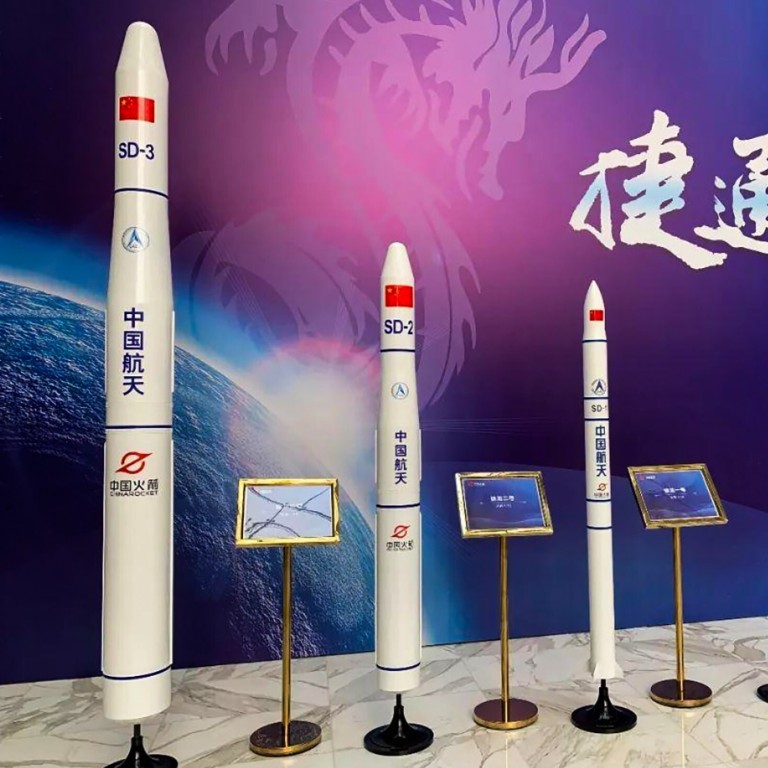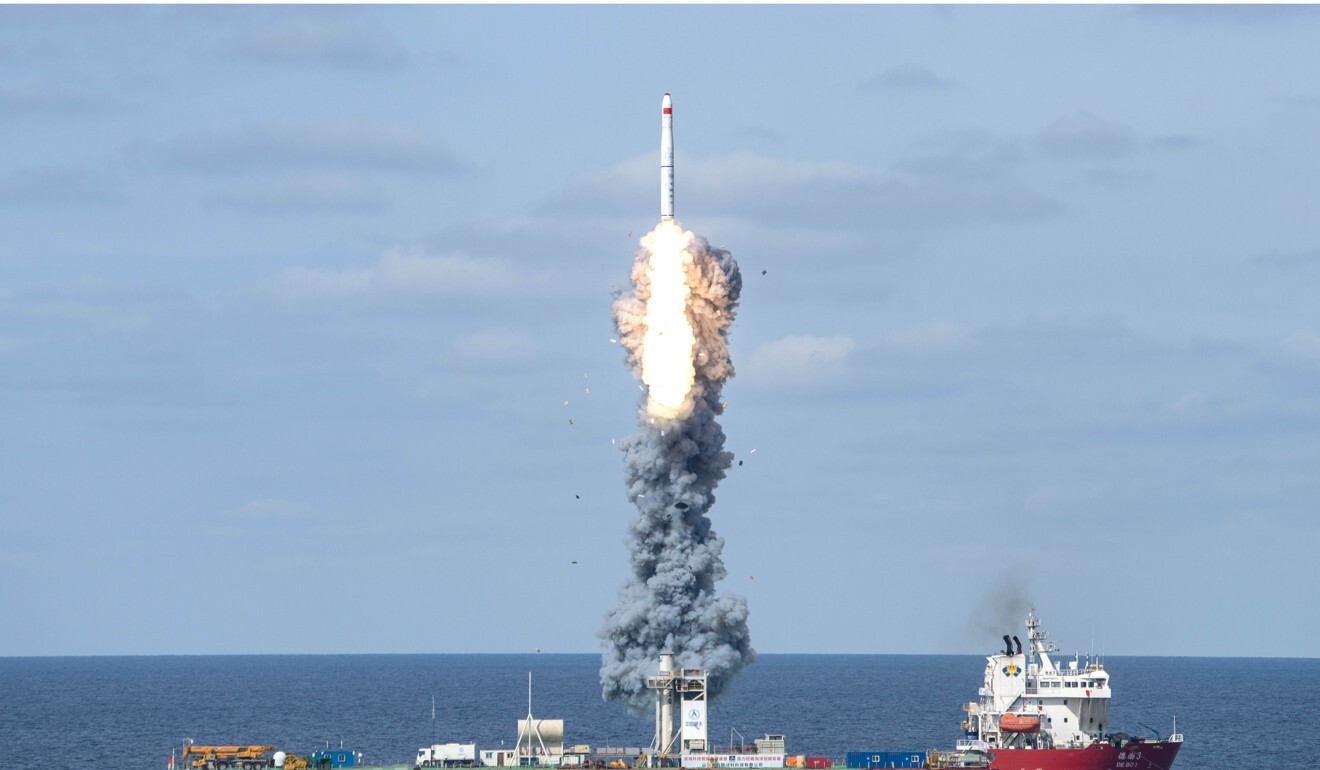
China is developing a new commercial rocket that can carry 20 satellites
- The small-lift vehicle will be ‘strongly competitive’, according to a scientist on the project
- Developer says it will be able to transport up to 1.5 tonnes to an altitude of 500km and its first launch is expected next year
China will launch a new solid-fuel rocket for the commercial market next year that will be able to transport 20 satellites at a time, according to state media.
The Jielong-3, or Smart Dragon-3 – a small-lift launch vehicle – will operate at a competitive cost per mass of US$10,000 a kilogram, Jiang Jie, a rocket scientist with the rocket’s developer, the China Aerospace Science and Technology Corporation (CASC), told Xinhua on Wednesday.
That compares to its predecessor, the Jielong-1, whose maiden flight in 2019 was priced at US$30,000 per kilogram.

01:23
Chinese factories race to get rockets ready for space launch missions
China’s small-lift rockets – the Kuaizhou-1 and Long March-11 – already operate at about US$10,000 per kilogram but the Jielong-3 will be significantly bigger at 2.64 metres wide and 140 tonnes.
The developer said it would be able to carry up to 1.5 tonnes, or 20 satellites, into sun-synchronous orbit, or an altitude of about 500km. The Jielong-1 can transport just 200kg, while the Long March-11 can handle 350kg, and the Kuaizhou-1 430kg.
“It’s targeting the growing market demand for large-scale launches to form commercial satellite constellations,” Jiang was quoted as saying. “The Jielong-3 will be strongly competitive – it’s economical, high-performing, reliable, adaptable and the preparation cycle is short.”
China’s Tianwen-1 Mars mission adding to growing domestic interest in space
China Rocket, a subsidiary of the CASC’s China Academy of Launch Vehicle Technology, started making Jielong launch vehicles in 2019.
It began the Jielong-3 project in late 2020, and its first launch – from a platform at sea – is planned for the first half of next year, according to the report.
“The Jielong-3 will add more variety to China’s commercial rockets and assist the development of our commercial space programme,” Jiang said.

To fulfil its space ambitions, work is under way to upgrade and develop new launch vehicles like the Long March rockets. They range from small-lift rockets to heavy-lift vehicles used for the lunar and space station programmes and a superheavy-lift rocket that is expected to be ready around 2028 and will be used for China’s first interplanetary mission.

